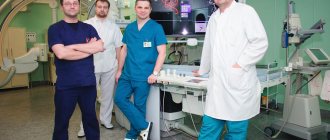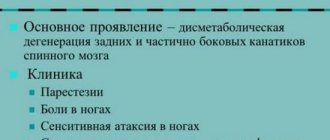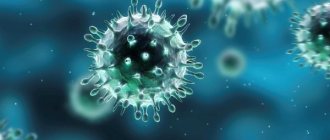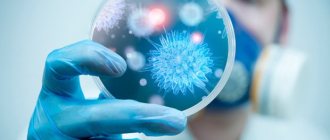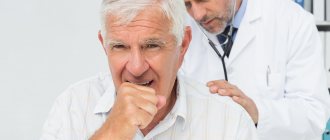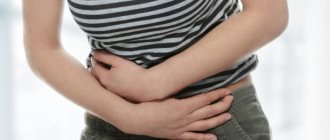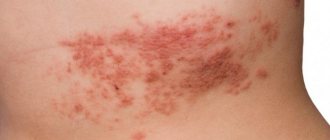Headaches and dizziness due to neurosis
Headache, perhaps, was born along with humanity.
This symptom has been troubling medical practitioners and theorists for many centuries in terms of cause and treatment. Many diseases are accompanied by headaches of varying nature and intensity. And if numerous examinations do not reveal physiological causes, this is a sure sign that it is time to consult a neuropsychiatrist. A feeling of heaviness or pressure in the head is observed in almost every person suffering from neurosis.
Sometimes, the nature of the headaches can help the doctor make an accurate neurological diagnosis.
How does a headache occur with neurosis?
With neuroses, patients' complaints about unpleasant sensations in the head area are very diverse in nature. Some people complain of constant, but not very strong, compression of the head, which resembles the feeling of wearing a helmet.
For others, the headache seems so unbearable that the person begins to really fear sudden death. The most common complaint is heaviness in the head, which persists even after a long rest.
Painful sensations are usually constant and of moderate intensity; as a rule, they intensify with increasing psycho-emotional stress. Complaints may differ depending on the form of neurosis.
For example, with neurasthenia, the nature of cephalgia is usually sharp, burning, with a feeling of pressure or heaviness in a specific area, which may be accompanied by dizziness. In patients with hysteria, the pain has a clear localization and is manifested by boring sensations.
With nervous exhaustion after stress or depression, painful symptoms in the head area intensify in the evening, the pain is usually very excruciating, sometimes accompanied by vomiting and nausea. Most often, patients with neurasthenia and hysterical neurosis complain of cephalgia as the leading symptom.
Various mechanisms of headache formation
The variety of pathophysiological mechanisms that cause neurotic cephalgia is so great that in medical circles there is an expression: “how many patients, so many types of headaches.” For ease of diagnosis, neurotic pain symptoms in the head area are divided into three large groups:
- Muscular cephalgia. The nature of pain is influenced by neuromuscular mechanisms. Most often, pain and pressure are observed in the neck and back of the head.
- Vascular cephalgia. Pain occurs primarily as a result of neurovascular disorders. Localization usually corresponds to the zones of the vascular basins, most often - temporal, less often - occipital and frontal.
- Psychogenic headache. There are no obvious muscle or vascular abnormalities.
Cephalgia of a psychogenic nature is more often observed with hysterical neurosis, and neuromuscular and neurovascular pain manifests itself most often with neurasthenia.
Neuromuscular headache
What sensations does a person experience during the muscular mechanisms of the formation of neurotic pain?
This type of cephalgia is felt as external pressure, tension, or constriction. Patients describe the painful condition very vividly, for example, as if a nail had been driven into the back of the head or as if the head had been tied with a hoop. Often, in addition to muscle pain and pressure, a feeling of numbness, coldness, and pain when touching the scalp is added.
Typically, painful manifestations are constant; they are stronger in the morning and evening, and less pronounced in the middle of the day. Such ailments are often accompanied by a feeling of nausea, dizziness, vomiting, increased anxiety and various fears.
Emotional stress, increased fear and hypothermia of the head cause an exacerbation of pain. Similar, but less severe headaches are characteristic of some somatic diseases.
Therefore, during the diagnostic process, post-traumatic conditions, diseases of the cervical spine, sinuses and eyes should be excluded. But the presence of concomitant emotional disorders almost certainly indicates neurosis.
Neurovascular pain manifestations
Vascular mechanisms cause pain of a pulsating nature. Patients may complain that something is pounding in their head; they may feel as if a vessel in their temples or the back of their head is about to burst.
Such throbbing pain usually appears after a certain period of time after the onset of neurosis: from a couple of weeks to several months. In the case of vascular mechanisms, the dependence of pain intensity on traumatic factors is clearly visible.
An aggravation of a stressful environment contributes to pressure disturbances and increased cephalgia. The course of the pain syndrome does not depend on the time of day and can be constant or paroxysmal.
Concomitant autonomic symptoms such as dizziness and nausea are less common than with neuromuscular headaches. Patients suffering from hysterical neurosis describe their pain in a particularly exaggerated manner.
In the process of making a diagnosis, one should first of all exclude various variants of migraine. An important criterion in this case is the presence of psychogenic factors that influence the appearance of symptomatic headache. It is the psychogenic nature that distinguishes neuroses from other diseases that occur with pain in the head.
Psychogenic headache
With psychalgia, the patient usually cannot clearly describe his pain sensations. He finds it difficult to say exactly where it hurts. Psychogenic headache is always clearly situationally determined, that is, it appears under certain circumstances. It is characterized by a slight increase in intensity and daily fluctuations.
Taking painkillers has no effect. Some researchers are inclined to believe that with psychalgia the patient does not actually experience physical pain. They believe that such pain syndrome is mental in nature and belongs to the area of hallucinations and illusions.
With neuroses, psychogenic cephalgia is quite rare. It usually appears in those people whose neurotic problems are associated with some kind of mental disorder. Painful pressure and heaviness in the head area can occur in patients during periods of intense intellectual effort and attention.
Along with a psychogenic headache, other psychosomatic symptoms are often observed: pressure surges, heaviness in the stomach, tachycardia.
Treatment of headaches with neurosis
In case of neuroses, treatment of any painful sensations, as well as vegetative-vascular symptoms (high blood pressure, arrhythmia, etc.) must be carried out under the supervision of a neuropsychiatrist.
Various analgesics are usually used to eliminate headaches.
Naturally, such treatment is purely symptomatic; the main efforts are aimed at eliminating the root cause of neurosis, and in the case of psychogenic pain, at eliminating concomitant mental disorders.
If cephalalgia is chronic, traditional methods of treatment can be used to alleviate the condition and minimize the side effects of analgesic drugs. To increase tone, use tinctures of lemongrass and ginseng.
Decoctions and tinctures of herbs such as arrow, fireweed, sweet clover, valerian, and peppermint have an analgesic effect.
For treatment, they also use propolis tincture, a compress of clay with mint or medicinal mud with garlic, as well as rubbing painful areas of the head with bleached oil with the addition of ammonia.
All remedies for treating headaches are good, however, the main thing for any neurotic patient is a calm home environment, a measured rhythm of life, no pressure on the psyche and regular support from the attending physician and loved ones.
Read more here
Source: https://vseostresse.ru/psihicheskie-rasstroystva/nevroz-i-golovnye-boli.html
Headache due to neuroses. Treatment of headaches with neuroses
Hysteria and neurasthenia are observed in almost 60% of cases of neuroses, and headaches in neuroses
is about 10% for neurasthenia and 7% for hysteria.
It is extremely rare for headaches to occur with obsessive-compulsive disorder.
As is known, neurosis can be caused by acute or prolonged psychotraumatic factors that affect the mental state.
There are a great many reasons for the development of neuroses - this can be constant overwork, increased levels of radiation, fatigue and lack of sleep, experienced serious somatic illnesses and many other factors, including stressful ones, caused by family or professional inappropriate situations that cause headaches
.
Headache due to neurasthenia
and hysteria are described in different ways and have a number of features.
In any case, it is caused by emotional overstrain, weakens after proper rest, healthy sleep or relaxation, so start treating headaches with neuroses
should begin with restoring sleep and the ability to relax.
So what is the difference between a headache during hysteria
and a neurasthenic headache?
Headache due to neurasthenia
Headache due to neurasthenia
has no specific localization and is characterized by pain in the back of the head, in the frontal and parietal regions, in the temples, intensifying when touching the skin.
Headache with neurasthenia
is called “neurasthenic’s helmet”, since neurasthenics describe it as severe constriction and constriction - a feeling as if wearing a helmet, hoop or helmet.
Headache due to neurasthenia
often accompanied by instability of the body in space (dizziness) and a presyncopal state (presyncope), instability in the functioning of the autonomic system. Pain is aggravated by:
Headaches usually plague neurasthenics in the morning, after sleep or in the afternoon.
A distinctive feature of patients with neurasthenia is difficulty concentrating. They tend to be absent-minded, sloppy and inattentive. Headache due to neurosis
This type can cause discomfort in different parts of the body (back, limbs, internal organs). Neurasthenia is characterized by symptoms of neurosis of the heart, intestines and stomach, and sleep disturbances.
Headache due to hysteria
Headache with hysteria
has a more specific localization, significantly different from
headaches with neurasthenia.
The headache is described by patients with hysteria more eloquently, it seems to be a sensation of a sharp object in the head, a nail or a needle, the “knocking” of a motor in the head, tension or gurgling.
Those suffering from hysteria have headaches
does not arise immediately, but only after they hear the recreation of the description from others. This distinguishes it from the pain syndrome associated with psychasthenia, when the headache is extremely rare and does not have a concentrated area of localization.
Headache due to neuroses
of any type is always accompanied by changes in the functioning of the autonomic system and can vary depending on emotionality, decreasing when attention is switched from the subjective sensation of pain.
Headache
neurotic etiology usually appears after the occurrence of a psychotraumatic factor or a reminder of a stressful situation that has already occurred, therefore, in order for
the treatment of headaches with neurosis
to have positive dynamics, the psychotraumatic situation and reminders of it should be excluded.
Treatment of headaches with neuroses
Successful treatment of headaches due to neuroses
is predetermined
,
first of all, by how effectively the factor that provoked the neurotic state was eliminated, and has an integrated approach, which at the initial stage involves taking painkillers (in a much lower dosage) and sedative herbal preparations that reduce nervous excitement.
Of particular importance is a healthy night's sleep, adherence to the diet and rest necessary to restore strength. It is very important to learn to relax using available relaxation methods - meditation, yoga, relaxation massage, breathing exercises, therapeutic exercises that stabilize the functioning of the central and autonomic systems. Healing from headaches due to neuroses
is brought by suggestion and auto-training, sessions of psycho-emotional relief with aromatic oils of sedative plants, water procedures, baths with decoctions of medicinal plants that have a sedative effect (mint, lemon balm, valerian, motherwort, lavender) are useful, their decoctions or tea are also useful from the fruits of rose hips and hawthorn, chamomile, oregano, fireweed (fireweed), St. John's wort.
Healthy sleep is the first step to eliminating headaches
Restoring healthy sleep is the first step to eliminating headaches . For this purpose, as well as to reduce irritability and stabilize the emotional background, herbal preparations with sedative effects are prescribed, among which tablet preparations Valerian P, Motherwort P, St. John's wort P, Ivan-tea P are highly effective (fireweed), in which the effect of herbal pharmacopoeial raw materials is enhanced by vitamin C. The recommended preparations are produced using innovative technology for the production of herbal preparations, the basis of which is cryotreatment at ultra-low temperatures.
It is possible to effectively reduce headaches due to neuroses caused by high emotionality, characteristic of hysteria and neurasthenia, by taking a collection of medicinal sedative herbs, the interaction of biologically active substances in which allows you to obtain a longer and faster effect, which are part of the biologically active complex Nervo-Vit, produced by based on cyanosis blue. Blue cyanosis in Nervo-Vit (one of the 100 best products of 2012) interacts with motherwort, lemon balm and valerian, significantly exceeding the sedative effect of the latter.
Not only proper rest, but also vitamins that support the functioning of the nervous and cardiovascular systems will help overcome fatigue and overwork. Vitamin complex Apitonus P, in which the effect of apiproducts is enhanced by an antioxidant complex, helps eliminate headaches due to neuroses
, which is permanent and does not go away even after rest.
We recommend reading:
Treatment for neurosis. Folk remedies and herbal preparations.
What is thermoneurosis?
Depressive neurosis is a consequence of prolonged depression!
Menopausal neurosis (menopausal syndrome) in women
Lack of air as a sign of a neurological disorder. Respiratory neurosis (hyperventilation syndrome).
What causes panic neurosis? Symptoms and treatment of panic neurosis.
Fear neurosis - obsessive neurosis, causes and treatment.
Features of neurosis in women. Causes and treatment.
Features of neuroses in men. Treatment of neuroses in men.
Source: https://xn—-ctbbjszjox.xn--p1ai/golovnaya-bol-pri-nevrozakh-lecheniye-golovnoy-boli-pri-nevrozakh/
Main symptoms of the disease
- home
- NEUROLOGICAL DISEASES
- Headache due to neuroses. Treatment…
Hysteria and neurasthenia are observed in almost 60% of cases of neuroses, and headaches in neuroses are about 10% in neurasthenia and 7% in hysteria. It is extremely rare for headaches to occur with obsessive-compulsive disorder.
As is known, neurosis can be caused by acute or prolonged psychotraumatic factors that affect the mental state. There are a great many reasons for the development of neuroses - it can be constant overwork, increased levels of radiation, fatigue and lack of sleep, experienced serious somatic illnesses and many other factors, including stressful ones, caused by family or professional inappropriate situations that cause headaches.
Headache arising from neurosis
Currently, psychogenic disorders have become a fairly common disease, and there is a logical explanation for this. Neurosis is a psychogenic disorder that occurs under the influence of external factors (prolonged stress, constant overwork and insufficient sleep, severe somatic illnesses).
In modern life, it is difficult to find a person who is not exposed to the aggression of one or more risk factors for the development of neuroses, since the rhythm of life requires constant overexertion, and rapidly changing political and economic conditions do not allow one to feel stability and security. But the disease does not develop in everyone, but only in people with a certain hereditary predisposition of the psyche.
Stress and psychological trauma contribute to the emergence of neurosis
Neurosis is not an organic mental illness; it is a borderline condition, and it is completely curable even in its advanced form. The disease has diverse manifestations and symptoms, despite this, there are certain signs by which a diagnosis can be made.
Mandatory signs:
- Reversibility of pathological manifestations at any stage of the disease.
- No personality changes or dementia.
- The ability to adequately assess one’s condition is retained.
- The disease is painful for the patient, unlike mental disorders.
Mechanism of development of psychogenic headache
Although the disease manifests itself in a wide variety of symptoms and can occur differently in different people, there are three main forms of the disease. Headache is often present in all forms, but the symptoms will vary.
Neurasthenia
This form is characterized by increased excitability, irritability, and instability of emotions. Headache can appear in different parts of the head, be localized in one place, or diffusely spread throughout the entire head.
The headache with neurasthenia is pronounced, often burning, but can be pressing or pulling. Often the intensity of cephalalgia increases when touching or pressing on the head. The scalp becomes sensitive and painful when pressed. In most cases, neurasthenic headaches are accompanied by dizziness, less often fainting.
Exhaustion neurosis
Exhaustion neurosis usually develops in young people (up to forty years of age). This form is characterized by the following symptoms: fatigue, impaired attention and memory, irritability, impatience, and decreased self-esteem. Skin diseases often worsen as a result of the disease.
The headache is painfully persistent and usually appears in the afternoon or during intense mental work; it can also develop after sleep. Cephalgia is often accompanied by nausea and even vomiting. With exhaustion neurosis, headaches appear several months after the onset of the first symptoms of the disease.
Reactive neurosis
With this neurosis, the headache is situationally determined and occurs after conflict situations, emotional stress, and after intense mental work. Cephalgia can be of a very diverse nature and bother the patient almost every day.
Treatment
Since headaches in patients with various forms of neuroses are psychogenic in nature and have no organic causes, effective treatment of such conditions is possible only in combination with treatment of the underlying disease. Often the pain goes away on its own, without treatment, if the patient takes action and eliminates the underlying cause supporting the disease. Sometimes for this a person has to change his life radically.
Woman consulting with a psychiatrist
Patients who cannot or do not want to change something are treated with tranquilizers and antidepressants. They must be selected by a neurologist or psychiatrist, since this group of drugs is quite extensive and, if used incorrectly, can cause significant harm and progression of the symptoms of the disease.
Analgesics do not relieve the symptoms of psychogenic cephalgia well, therefore, if the patient is aware of his illness, and the attack is associated with a specific emotional situation, you can independently take sedatives containing extracts of medicinal plants (valerian, motherwort, novopassit). Many people benefit from a relaxing massage or a fragrant hot bath. Treatment with physical activity is effective, since during sports, endorphins are produced, which have an analgesic effect and also improve mood.
Other causes of cephalalgia
Since people suffering from neuroses are ordinary people, they may have other reasons for headaches that are not related to psychogenic disorders.
- Arterial hypertension.
- Osteocondritis of the spine.
- Atherosclerosis of cerebral vessels.
- Infectious diseases.
- Brain tumors.
- Severe chronic anemia.
- Diseases of the eyes and ENT organs.
- Dental disease and inflammation of the cranial nerves.
The causes of headaches can be very diverse.
Such diseases require specific treatment and are often diagnosed late in patients against the background of psychogenic symptoms.
Therefore, if a person with psychogenic disorders often and persistently has a headache, it is necessary to undergo a course of examination to exclude other causes of cephalgia.
As a rule, most organic diseases that can manifest as cephalalgia can be easily diagnosed by examination by a neurologist, as well as magnetic resonance imaging.
Migraine
Migraine is a disease that has complex and not fully understood mechanisms of development. The disease is hereditary and occurs in people who do not have mental disorders. However, against the background of neuroses, the disease can progress: attacks will be longer and more intense, and tolerance to treatment will appear.
Migraines are accompanied by excruciating attacks of headaches
Often, headaches with neurasthenia have symptoms similar to migraine attacks: photophobia, increased pain with noise stimuli, nausea, vomiting, but the mechanism of the pain syndrome is not the same as with migraine.
Migraine is characterized by pathological dilation of cerebral vessels, which accordingly requires specific treatment. With neurosis, such expansion does not occur, so the patient is prescribed treatment with sedatives.
As a rule, psychogenic diseases do not have a hereditary history.
Source: https://GolovaLab.ru/cefalgiya/zabolevaniya/golovnaya-bol-pri-nevroze.html
When your limbs go numb
With a stroke, there are other symptoms: facial asymmetry, speech impairment, numbness of the limbs, muscle weakness. If you experience any of the above symptoms, you should immediately call an ambulance.
In a transient ischemic attack (TIA), a blood clot blocks a blood vessel in the brain for several minutes. This happens if the lumen is too narrow due to cholesterol plaques (atherosclerosis). Attacks occur regularly and are manifested by numbness of the arm, leg and/or face (mainly on one side), weakness, dizziness, double vision, and slow speech. The symptom complex depends on which vessel is affected.
Statistically, a third of people with a TIA will have a stroke, so such patients should definitely see a doctor to reduce their risks.
With multiple sclerosis, numbness of the face, limbs, and individual parts of the body is often the first symptom. Numbness can vary in strength, but sometimes it makes it significantly difficult to move an arm, leg, etc. There are no medications that can help cope with this condition. Despite the fact that the symptom may go away on its own, you should definitely seek help from a specialist as soon as possible.
Treatment of neurological headaches
One of the areas of activity of neurology is the treatment of headaches. Headache is a companion to a large number of diseases. Before you take a painkiller yourself, you should think about the cause of the discomfort you are experiencing and consult a doctor.
What causes and how do neurological headaches manifest?
Depending on the cause of the pathology, the following types of neurogenic headaches are identified:
- Pain syndrome caused by impaired blood circulation in the arteries of the brain. It often occurs in the back of the head and is pulsating and compressive in nature. Among the accompanying complaints, nausea with vomiting, severe weakness, attacks of darkening in the eyes and flashing “flies” predominate.
- Painful sensations that are provoked by prolonged tension of a certain muscle group. They are caused by a prolonged and uncomfortable position; the pain itself resembles tightening the head with a hoop.
- Pain caused by problems in the cervical spine. Infringement of nerve fibers and arteries, which is caused by pathology of intervertebral discs, tissue proliferation, osteophytes, causes severe pain.
- Hypoxic – the result of being indoors or in conditions where the air is depleted of oxygen (crowding, closed and poorly ventilated space).
- Migraine is a severe, paroxysmal headache with an unclear cause.
- Pain due to neuroses, neurasthenia, hypochondria and other mental pathologies.
How to get rid of neurogenic headaches
The effectiveness of treatment for neurological headaches largely depends on the correct determination of the cause and nature of the pain. Cerebral circulation disorders require the use of blood pressure normalizing agents, diuretics, sedatives, and antioxidants.
Complexes selected by doctors quickly eliminate both pain and its cause. Pain caused by muscle strain is relieved by massage, physical therapy, and physiotherapy. Treatment of headaches from compression of nerves and blood vessels is carried out using painkillers.
Acupuncture and manual techniques are very effective in this case. Problems caused by brain hypoxia can be eliminated by access to fresh air, room ventilation, and breathing exercises.
Migraine requires treatment with a specific selection of medications and the use of laser therapy.
Acupuncture and laser therapy used in medical treatment for various types of headaches
Acupuncture and laser acupuncture are among the most important reflexology techniques. Thanks to their effect, pain impulses are suppressed and the threshold of excitability of pain receptors increases, caused by the normalization of the balance of pain modulators and mediators: norepinephrine, opiates, serotonin.
In addition, the effect on biologically active points inhibits pathological processes that contribute to the development of headaches of various etiologies: with its help it is possible to relieve pathological tension in the head muscles, dystonia of extracranial and cerebral vessels, and reduce other pathogenic processes.
Acupuncture and laser acupuncture are great for:
- migraine;
- vascular headache with cerebral angiodystonia, vegetative-vascular dystonia, regional cerebral hypotension, venous hypotension, hypertension, atherosclerosis;
- muscle tension headache;
- facial pain in psychopathy.
Headache due to neurosis and neurasthenia: treatment with psychotherapeutic techniques
A special group that requires special treatment are headaches due to neurosis and neurasthenia. The nature of neurotic pain is very diverse and presents some difficulties in diagnosis. Patients describe a wide variety of complaints, which sometimes mislead the doctor.
Treatment of headache symptoms due to neurosis and neurasthenia, in addition to drug therapy, necessarily includes techniques aimed at working through the initial neurotic conflict. In this case, both psychotherapeutic methods and psychoanalytic practice can be used to help relieve neurotic tension and identify the causes of the painful accumulation of such tension.
Our specialists have all the necessary knowledge and extensive experience to help provide effective treatment for neurological headaches in the shortest possible time! Just dial!
Authorship and editing of the text:
Head of the Department of Psychiatry and Narcology of the Alkoklinik MC, psychiatrist-narcologist Popov A.G., psychiatrist-narcologist Serova L.A.
CAN'T FIND THE ANSWER?
Consult a specialist
Or call: +7
Call! We work around the clock!

